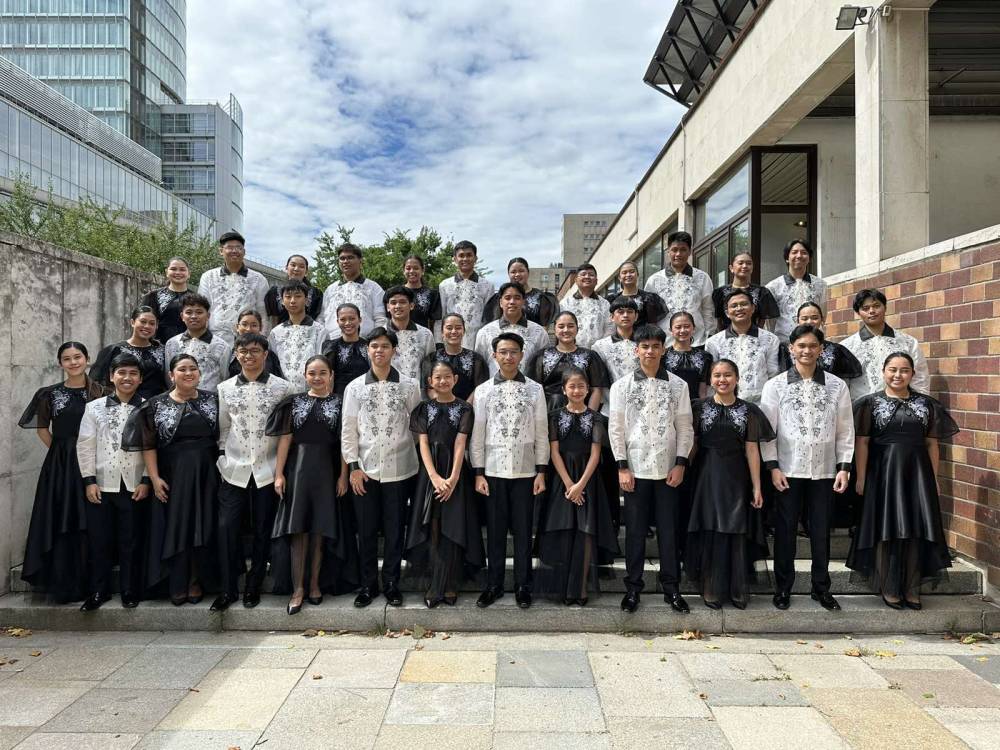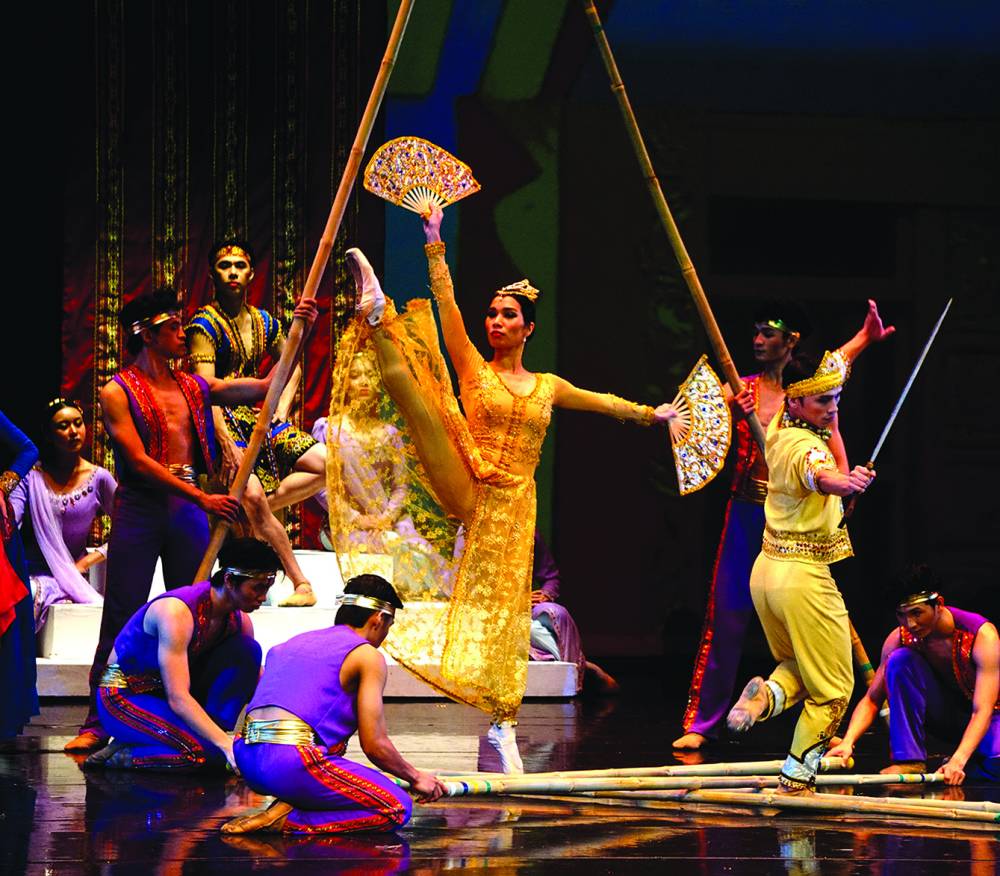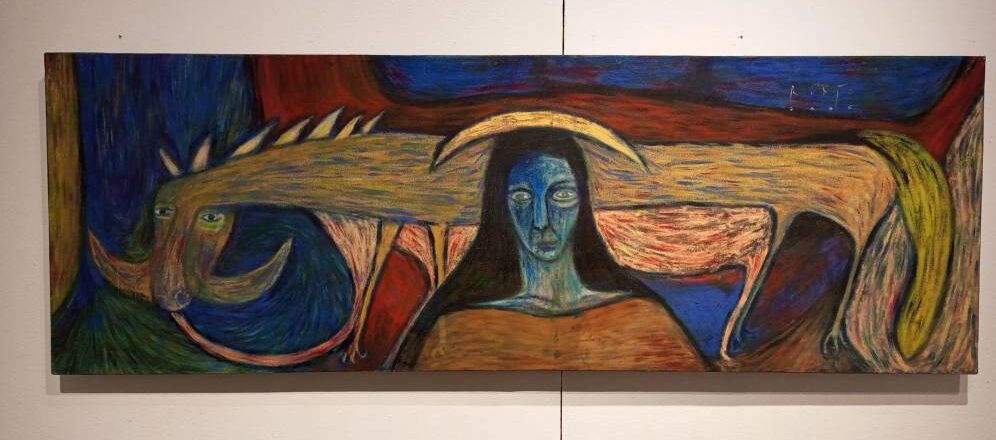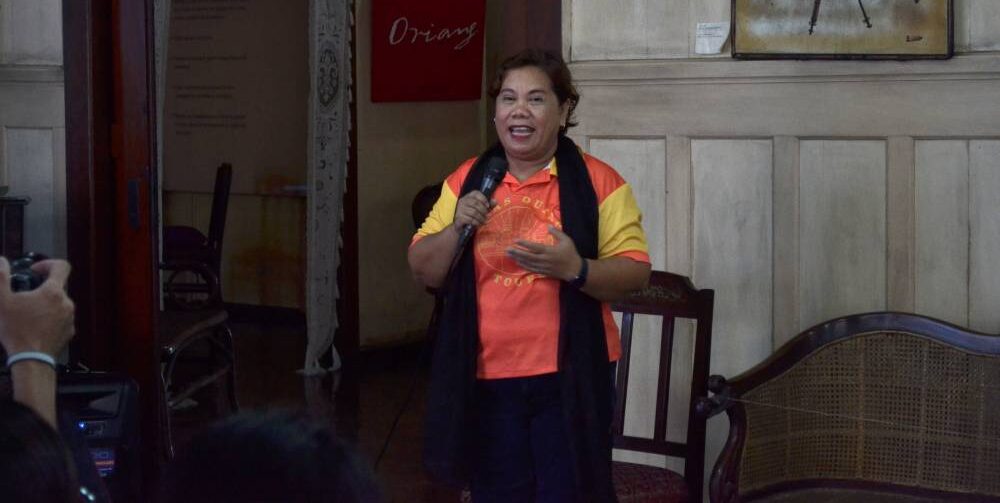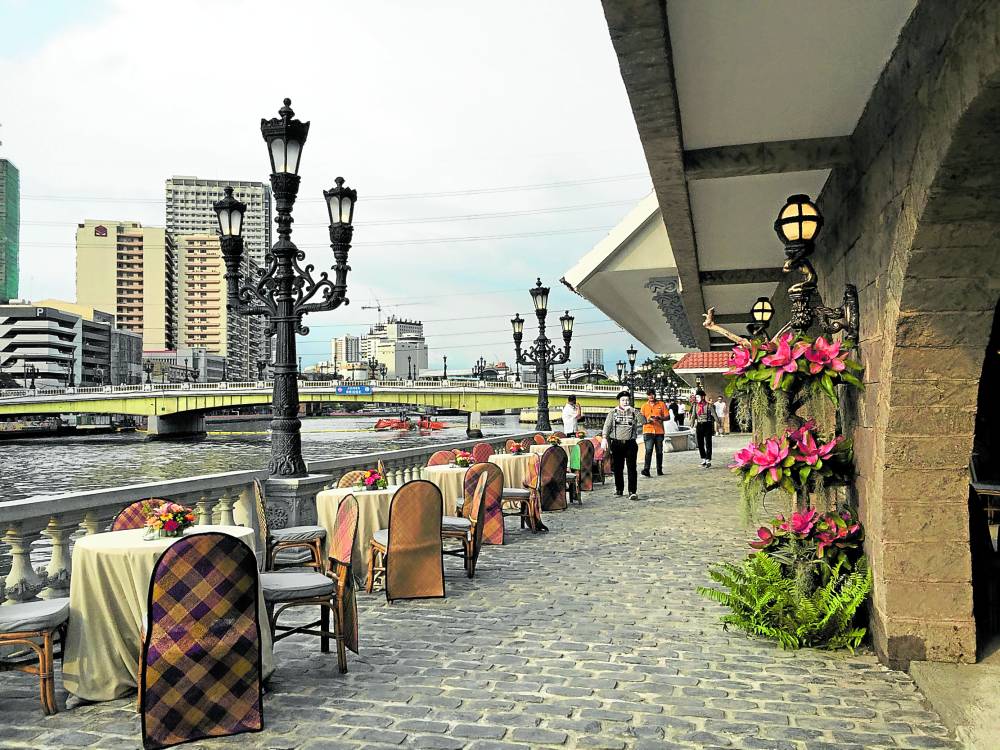Being a veteran actor for film, television and theater, Fernando “Tata Nanding” Josef’s type of work gobbles up his weekends, and on some Mondays, while the rest of the populace are up and about in their offices, he is taking everything slow at home.
What’s left of the torn ancestral house and land he inherited have been creatively transformed into a resort-like residence right in the periphery of Marikina City.
In his favorite white camisa de chino and casual shorts, he could be seen playing with his 10-year-old black Labrador named Poopy, feeding koi fishes in a manmade pond, or taking photos of caged fowls.
All these are in his green garden shaded with a century-old star fruit tree (balimbing) and those he planted when he moved in the property in 2018, like avocado, guyabano, guava, chico, duhat and bamboo trees.Or he could be seen having coffee with visitors in the metal-roofed open-air sala, which is what one immediately sees upon entering the wooden gate. He likes to call the whole property as Bahay Malaya. There’s an actual printed poster with photos of his ancestors nailed on the wall outside with that name, to guide first-timers.
“This open-air sala with cemented floor was the site of the original house. Once I have the funds, I plan on converting this into a family museum where all the many other old furniture, photos, kitchenware, clothes can be exhibited. Meanwhile, all these items are still in the sawali-enclosed bodega,” he tells Inquirer Lifestyle.
Naps on lazy afternoonsCalming to the eyes are the clay tiles adorning some portions of the house as wall surface or additional covering on the concrete roof.
What would easily catch one’s attention is the veranda on the second floor with rainbow-colored curtain vines that serve as natural blinders to sift the sun’s heat. If this was the setting of Korean drama, this would be where the heroine looks up to the skies on a clear day and waits for his dashing oppa to land in a parachute.
Then again, Josef uses the veranda to take naps on lazy afternoons or during rainy days, to watch birds taking shelter.
The original house he inherited was connected to a cousin’s home on the other side of the fence. It was mostly made up of wood and was torn down in 2015.
Josef, who used to live in the south of Metro Manila, decided not to renovate the old structure and instead built a new house at the inner end of the lot. He moved in three years later, retaining the cemented location of the sala, only this time without the walls.
He covered the fences on both sides of the property with bamboos. One side where the sala is attached has dried tall bamboos that also serve as wall décor. On the opposite side, Chinese bamboos line up the fence where the driveway and parking lot are located.
“After seeing the structure built, and seeing all the inherited materials, the furniture and miscellaneous wares, para akong naging production designer ng isang ‘stage area’,” he says, smiling.
The bamboo wall in the sala is where his collections of handicrafts, native bags from the countryside, a farmer’s wooden ploy we only see now in Fernando Amorsolo’s paintings, are on display. There are also black and white photographs of the old house, his parents, grandparents and relatives. In a shelf nearby, a book lover would find treasured titles on cinema, theater, history and the arts.
100-year-old ‘balimbing’ treeOnly the two-lane road out front separates Bahay Malaya and its neighbors from a wide, vacant lot that used to be rice fields decades ago. The trees Josef planted and the row of Chinese bamboos from the gate leading to the new house filters air pollutants from passing vehicles.
Josef said all the wooden materials in the big and small gates, the doors in his room on the first floor, the dining table, benches as well as the stairs leading to the second floor, all came from the torn ancestral house.
On the ground floor of the two-story abode, there’s a porch that serves like a mini-altar because of a centuries-old statue of the Virgin Mary. In a typical house setup, Josef’s room that is right behind the porch would serve as the receiving area.
Instead, in it Josef has a bed big enough for a man his size, clay tiles-decorated lavatory and a comfort room, a few old cabinets, wooden tables and chairs.
There are the old balimbing and mango trees in front that shade a nearby koi pond and the veranda on the second floor.
“The wooden ‘house’ of the 300-year-old Immaculada Concepcion statue is as old as the icon. The balimbing tree is probably 100 years old because my father told me they climbed that when they were kids,” he recalls.
The dining area has large windows and woven bamboo strips or sawali walls that give the impression that you are inside a bahay kubo (native nipa hut). On the wall are more handicraft bags from his tours in the countryside.
Adjacent to the dining area is the kitchen, where old earthenware jars are placed and more collections of native bilao also hang on the walls.
“The books (in the sala) are all mine. The old bilao and tapayan are all from the ancestral house. The new baskets are my collection from fruit basket gifts of friends. The Mangyan baskets are from Mindoro. I’m helping the Mangyans sell their baskets,” he says.
“The other indigenous baskets and clothing materials I’ve collected from my immersion, workshops all over the country, from Cordillera to Mindanao and the Visayas as a cultural worker with Peta (Philippine Educational Theater Association), CCP (Cultural Center of the Philippines), NCCA (National Commission on Culture and the Arts), PHSA (Philippine High School for the Arts) and TP (Tanghalang Pilipino).”
Josef began as an actor at Peta in the early 1970s. At the CCP, he once served as vice president and artistic director, while he chaired the committee on dramatic arts at NCCA. He served as executive director of PHSA. He has been artistic director of TP for 15 years now.
Shoemaking clanAt a corner near the dining area, easily noticeable is an old shoemaker’s sewing machine. It’s not functional anymore but definitely a reminder of Marikina’s golden years as the country’s top manufacturer of shoes and other leather-based products.
Josef simply calls it lumang makina, old machine, from an auntie who worked as shoemaker.
“Sya ang nag-aareglo ng entrada. It’s not a makina for clothes. The makina for clothes used by my modista (dressmaker) auntie is ‘folded’ under that makina for shoes.”
Josef comes from a clan of shoemakers. His father’s first cousin, Elpidio Valentino, is the man behind one of Marikina’s pioneering and enduring shoemaking factories, Valentino Shoes. “We call him Kuya Pidyong. His mother and my grandfather, Tatang Ponseng or Ponciano Josef, are siblings,” says Josef.
“There were other sapateryas who are Tatay’s cousins, namely Miguela Aquino, Benjamin Josef, Dominga Mejia, the children of Kuya Pidyong Valentino, and more.”
The second floor is where more coffee-table books and rare collectibles are kept in a mini-library that also serves as an art gallery. Josef has a collection of acrylic paintings, most of which were done by his grandniece, Bea Alcala, a graduate of UP Fine Arts. It is also here where he keeps his collection of handwoven scarves, masks, sablay, alampay, a few pashmina shawls from indigenous weaving communities in the Philippines.
There are more rooms where strategically placed windows, if opened all at once during the wet season, could cool the whole second floor even without electric fans.
As a whole, Bahay Malaya is ideal for an artist’s hideaway, a retiree’s dream house, a novelist or playwright’s respite to finish a manuscript. On a lazy Monday afternoon, it’s Josef’s masterly designed stage.
He says in jest, “I hope to finish the family museum and share it to my visitors before I become a museum piece myself.”











